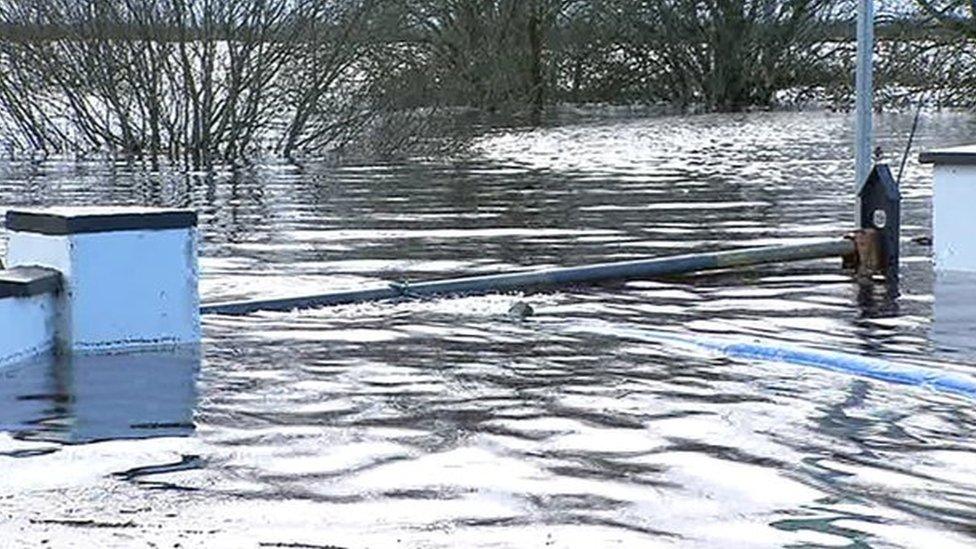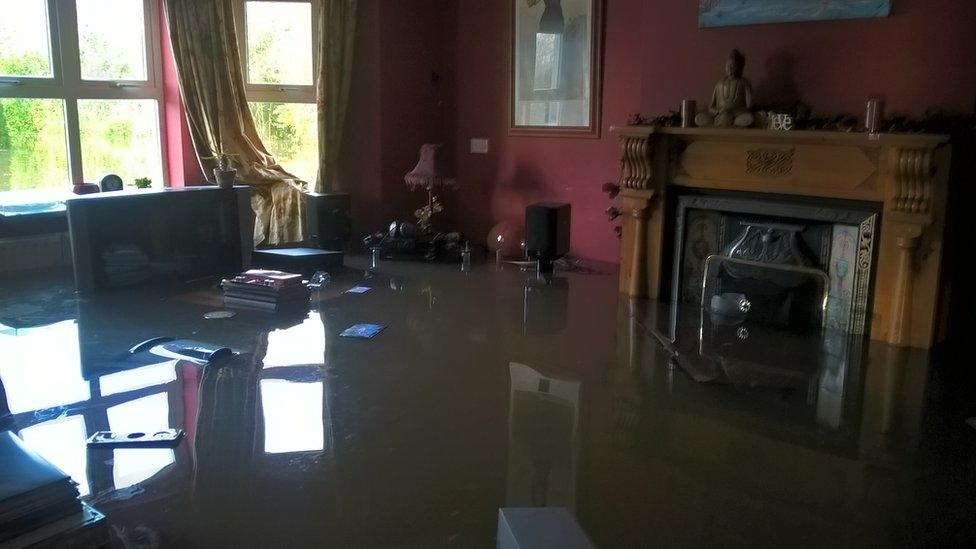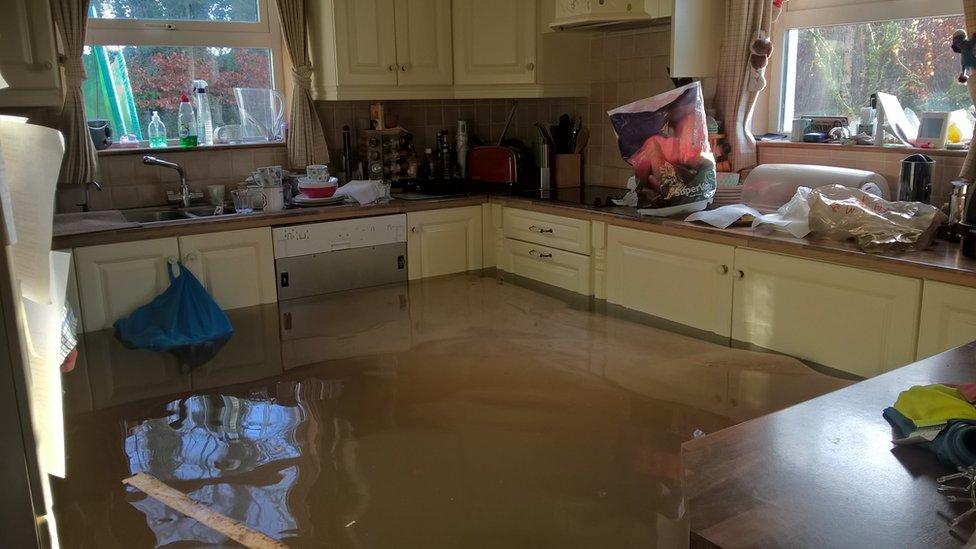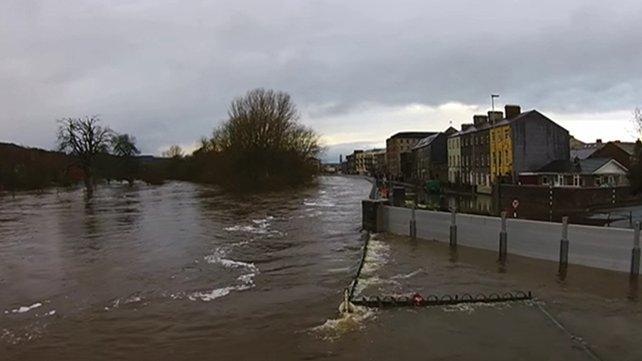Republic of Ireland flooding: Clean-up to cost 8m euros
- Published

Athlone has been affected by the flooding in the Republic of Ireland
The cost of the clean-up after recent flooding in the Republic of Ireland will be more than 8m euros (£5.9m), a government minister has said.
Minister of State Simon Harris said funding allocated to local authorities to deal with the aftermath of the bad weather will have to be increased.
More than 260 homes have been flooded and more are at risk after heavy rain.
Irish President Michael D Higgins visited flood affected communities in Galway and Wexford on Monday.
More than 100 people had to leave their homes in Athlone, after the power supply was switched off after flooding.
The Bastion Quay apartment complex is one of the largest in the town.
RTÉ reports that the Electricity Supply Board (ESB) cut power after pillars connecting an electricity substation to the complex became submerged in flood water.
Water levels on the River Shannon are the highest on Lough Ree since records began in 1932.
The Irish Defence Forces have been operating pumps in a number of areas.
About 110 members have been deployed across the Republic to help with relief efforts, with more on standby.
Cork County Council has said it may take a number of days to clear flooding from the N25, the main Cork to Waterford road which is impassable between Killeagh and Castlemartyr in east Cork.

Anthony O'Brien took this picture of his flooded home in Fermoy, County Cork.

The kitchen of Mr O'Brien's home.
The road has been flooded since last Wednesday's storm and prolonged heavy rain. Flooding on the road is extensive and an industrial pump is being used take water away from the affected area.
Water is being pumped over a distance of a kilometre to try to relieve the flooding. However, about 50 acres of land on both sides of the road is also flooded, exacerbating the situation.
Long-range forecasting system
Mr Harris said the extent of the damage caused by the flooding is still not clear, but said the government would not be found wanting in providing extra funding.
He also said that the cabinet is due to approve the introduction of a new long-range weather forecasting system when it meets on Tuesday.
He said the system would ensure the government has the most accurate forecasts, but said it would take several months to put in place.

Thomas Cleary said there was now about two feet of water at his stables in County Westmeath
Mr Harris added that the government would look at the possibility of making grant aid available to individual householders to build flood protections for their homes or, in some cases, to assist them with leaving flood-prone areas altogether.
'Anxious and distressed'
President Higgins called on people to "pull together" to help those affected by the flooding.
"While everybody was very tired and those who have had to leave their homes are anxious and distressed, there was a great sense of determination to overcome these recent events," he said.
"It is especially important that as a nation we pull together now to address the urgent challenge of managing these events and of putting in place the mechanisms needed to ensure better preparedness in the future, as the evidence points to these extreme events becoming more frequent, and accelerating, in the years to come."
Earlier, a racehorse trainer from County Westmeath described the impact the flooding has had on his business.
Thomas Cleary told BBC Radio Ulster's Good Morning Ulster that the flooding began on 4 December and there was now about two feet of water in his stables.
He said that even if the water was to stop rising this week, it would take at least a month before it left his yard.

Bedding and feeds have been lost as a result of the flooding on Thomas Cleary's premises
He said he had moved his horses to the Curragh in County Kildare and had to travel there every morning to attend to them.
"It is 60 miles each way of a journey," he added.
"It is quite expensive because we lost all the bedding and feeds that we have at home so that all has to be got in Kildare."
Mr Cleary said that following flooding in 2009 it cost in the region of 40,000 euros (£29,500) to restore his yard.
- Published3 January 2016
